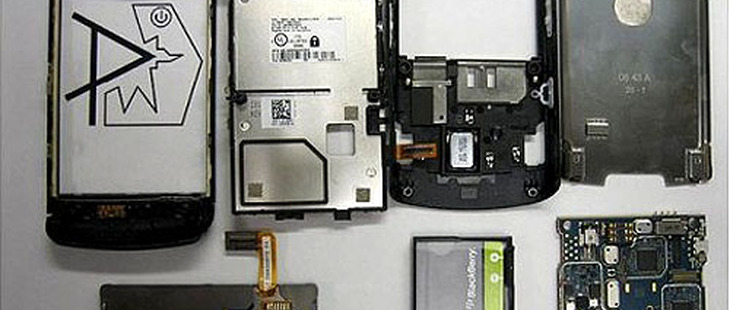
(Photo: BlackBerry Cool) Is there any hope left for the BlackBerry? It’s a question that just 3 or 4 years ago would have seemed ludicrous, but now is on every tech-watcher’s mind. It’s not just last week’s disastrous service outage that left millions disconnected, either. Research in Motion, the makers of the BlackBerry, stumbled badly with their Playbook tablet launch, while their iconic smartphones are now often seen as corporate millstones rather than the status symbols they once were. But today, when RIM finally give the world a glimpse of their new BBX platform that will power all their phones going forward, we’ll get a chance to see whether the BlackBerry will survive. And with RIM co-CEO Jim Balsillie claiming not only a turnaround for the company, but that their new phones will leapfrog the competition, one has to wonder: what exactly will RIM have to do to once more make themselves competitive with Apple and Google? Here are three key areas the Waterloo company must focus on. Consumerize the enterprise There is more to RIM’s continuing ubiquity in the corporate world than mere inertia. RIM’s core strength is that it runs its own software, called BlackBerry Enterprise Service, to support the phones it sells. It’s that service through which not only email, appointments and instant messages all gets pushed to RIM devices, but it’s also that which guarantees the BlackBerry’s famous rock-solid security. What’s more, it enables neat little touches like being able to join conference calls straight from a calendar reminder. But even these still-impressive advantages are being hampered by a maddening interface. There is a broad shift afoot that many are calling the ‘consumerization of the enterprise’ in which corporate users, having been exposed to iPhones and iPads at home, are no longer content to suffer through clunky, archaic interfaces and inelegant hardware in the service of ‘utility’. With iOS and Android both reaching new heights of usability, RIM has little choice but to adapt. As a result, what is absolutely crucial for RIM and their new BBX operating system is neither simply aesthetic glossiness nor a checklist of features other platforms lack; it’s making the impressive feature set of BlackBerries accessible for novice users while not taking away any of the power the classic type-A ‘berry user lives for. Love or hate his philosophy, when the late Steve Jobs said “Design is not just what it looks like and feels like; design is how it works,” he was onto something. Designing an interface that enables, rather than obfuscates, BlackBerry’s considerable strengths should be job one for the folks at Waterloo. Leverage BlackBerry strengths–including the ones we don’t know about yet In a sense, it was RIM themselves who pioneered the idea that when you buy a smartphone, you’re also buying an entry pass to an ecosystem. Unfortunately, in the movement from services to apps, RIM got left behind, as developers found it both complicated and difficult to create apps for BlackBerries. Yet, RIM still has assets. BBM, RIM’s instant messaging service, is not only still popular, it has numerous applications. BBM Music, for example, which let you share up to 50 songs with BBM friends, was an interesting if flawed idea that suggested it was the BlackBerry infrastructure that remained a key advantage for RIM. An idea like BBM as basic form of social network that carries friend lists, preferences and interactivity between various apps seems fruitful, in large part because it’s something other companies cannot match without relying on third-party services like Twitter or Facebook. But what it also showed is that for RIM to compete in the new world, it has to not only leverage specific Blackberry strengths like BBM, corporate security and that famous keyboard, it has to do so through apps, not simply ‘features,’ integrating them at the level of the OS to enable a comprehensiveness and unity of experience that at least puts them no par, if not exceeds, Apple and Google. Simplify, Simplify, Simplify Simple does not mean simplistic. It means straightforward, clear and without unnecessary complication. But though those directives are obviously necessary for BlackBerry’s interface, it’s also necessary in two other areas: the product line itself; and in marketing. For years, BlackBerry has had an enormous number of models out of necessity. Competing wireless technologies, differing demands from global markets and the enterprise versus consumer questions resulted in a veritable flood of current models. But in order to clarify its appeal, RIM must drastically chop the number of handsets it creates, in part because the sheer breadth of choice is confusing to both individual and corporate customers. Yet, the simplification of the product line is also tied to marketing. Though BBM and the BlackBerry brand still have decent word of mouth, the excess of models dilutes the overall branding message. Though some may be able to tell you the difference between a ‘Curve’ and a ‘Bold,’ most people couldn’t, and nor would they care to. And really, it’s ultimately that message which is crucial: for RIM to make people care about the BlackBerry, they have to offer something no-one else has. With the Playbook, they aimed for ‘high-performance’ and failed miserably by failing to include RIM’s core features. In their archaic phones, they’ve compared poorly to competitors. What RIM desperately need is a clear, unambiguous message that says “this is what using a Blackberry enables you to do.” If by today Blackberry, haven’t proved they have clear, compelling reasons for people to stay–then it might be time to kiss the Canadian tech stars goodbye. __ Navneet Alang is the Toronto Standard Tech Critic














